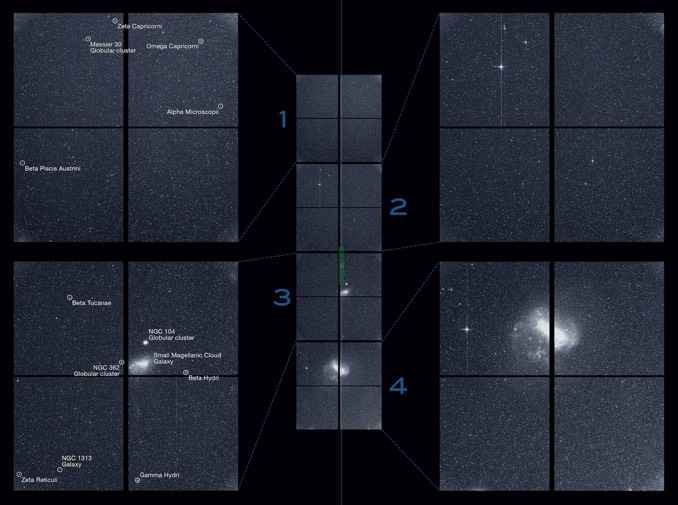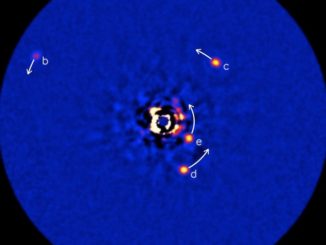
NASA’s exoplanet-hunting TESS spacecraft, launched 18 April, has captured razor-sharp first-light images from all four of its 16.8-megapixel cameras, covering a 24-degree-wide strip of sky from the celestial equator to the southern pole.
“In a sea of stars brimming with new worlds, TESS is casting a wide net and will haul in a bounty of promising planets for further study,” Paul Hertz, astrophysics division director at NASA Headquarters in Washington, said in a statement. “This first light science image shows the capabilities of TESS’ cameras, and shows that the mission will realise its incredible potential in our search for another Earth.”
TESS is designed to monitor starlight across 85 percent of the sky, on the lookout for the tell-tale dimming that occurs when a planet moves in front of its sun as viewed from Earth.
The four wide-angle digital cameras at the heart of the mission, built at MIT’s Lincoln Laboratory in Massachusetts, are arranged to capture 24-degree-wide squares stretching from the equator to the celestial poles. It will take the spacecraft 27 days to image a single “observation sector” stretching across 96 degrees.

When one sector is complete, TESS will aim itself at the next sector and spend another 27 days collecting another 96-degree-long strip.
During each 27-day period, TESS will monitor the brightness of every star visible in all four cameras every half hour. Every two minutes, some 15,000 pre-selected stars in each sector will be monitored for signs of orbiting exoplanets.
The first year of science operations will be devoted to imaging the 13 sectors needed to map the southern sky. TESS then will repeat the procedure to study stars in the northern sky.
Tess is an advanced follow-on to NASA’s Kepler mission, which found more than 2,300 confirmed exoplanets and another 2,200 candidates during its initial mission and another 325 worlds during extended observations. Kepler’s targets were stars 300 to 3,000 light years away.
In contrast, TESS will concentrate on stars between 30 and 300 light years away that are 30 to 100 times brighter than those monitored by Kepler. By targeting brighter nearby stars, the TESS researchers hope to identify targets for future spectroscopic analysis by the James Webb Space Telescope and other instruments to determine the atmospheric composition of detected exoplanets, along with their masses and densities.
A NASA video illustrates how TESS will operate:



